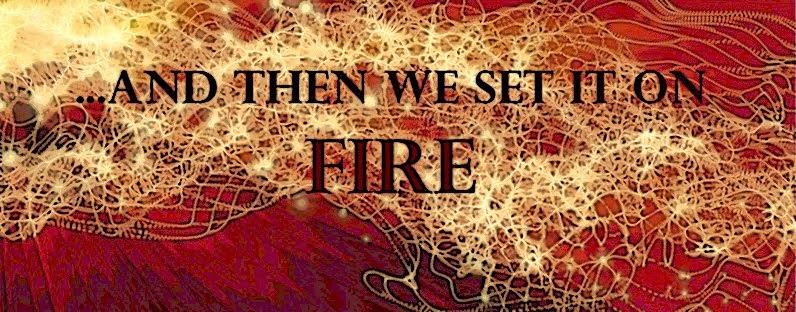Penny Gold here. My attention in quiltmaking has
long been focused on color and shape. Choosing fabrics, creating pleasing
adjacencies of color, selecting shapes--these have been my main pleasures.
Quilting the layers together at the end was often done with reluctance--I
loved how the tops looked without quilting. I thought about changing to
doing fabric collage rather than quilts, but I love the feel and drape of
quilts, and I enjoy giving quilts to family and friends as gifts that can be
used. And--I had to admit--the finished
quilted product always did look better than the unquilted top.
I have always done some
handquilting (reserved for projects that had special personal meaning) as well
as machine quilting. Whether working by hand or machine,
I found it difficult to think creatively about the stitching; my main question
was: what stitching would detract/divert the least from the design I had made
through color and shape. Several years ago, I decided to
challenge myself to think in a more wide-ranging way about the quilting, to
think of the quilting as a kind of drawing, as a layer that could add
additional meaning to a quilt rather than just supporting what was already
there. I had the good fortune to be able
to take an art class at the college where I was teaching, a course called
"Drawing in the Expanded Field." The course was about a wide range
of 20th-century and contemporary drawing, considering "drawing" in
the widest possible sense. I looked at artists familiar to
me in a new light and learned about many more; favorites include Sol Lewitt,
Agnes Martin, Gego and Eva Hesse. I did a lot of experimental
drawing. I learned a great deal, with two things in
particular that have an impact on my work in quilting:
1) I love repetition of simple
lines and shapes. This is obvious from my
attraction to the artists mentioned above. Variation is also a necessary
part of the work—but sometimes only the very slight variation that comes from
something being repeated by a human hand. There is an obvious connection
here to the pleasure I get from traditional hand quilting—one similar stitch
after another—and from my favorite style of machine quilting, which is closely
spaced parallel lines. There is a kind of control and
attentiveness in these processes that appeals to me.
2) But—more of a surprise to
me--I also learned that abandoning control can also yield interesting and
pleasing results. I'll talk about two examples.
Using a code to generate a sequence of shapes:
One exercise in the class was to
find a pre-existing pattern or code, and to use that to generate a sequence of
some sort in one's art work. The pre-existing pattern I used
was a sentence taken from a book I happened to have open. Then, following the sequence of consonants and vowels, I assigned
vowels to be squares and consonants to be rectangles:
I loved making this and others
like it, fiddling with various shapes and assigned codes. It freed me from making decisions about
placement of each shape—I just followed the code. Yet, because there was some underlying meaning/rule in the
originating code (the relationship between consonants and vowels in English
words), the resulting pattern of shapes had a kind of in-built balance to
it. I enjoyed the combination of
freedom with structure.
Cutting things up and re-structuring:
One of my ongoing quilt projects
has to do with stones, some pieces focused on color, others on
shape. For the ones focused on shape, I was intent to convey the
beauty of the myriad curving contours of stones, so I put those curves against
a contrasting background, for example, these small pieces made with
hand-painted fabric:
One of the class assignments was
to cut up something and then make something from the pieces. I photocopied a number of photographs
of stones, cut up the photocopies, and collaged them together. Here's one of the resulting collages,
perhaps my favorite piece from this class:
and a detail:
I made straight-edge cuts, and I
like how those straight edges play against the curved lines of the stones. This is nothing like the fabric work I
had done before, and I never would have gotten here through step-by-step
figuring out. It took the leap of
cutting up, itself done randomly, without intentionally trying to make
particular shapes (other than angular edges).
Buoyed with courage from that
experiment, I took the leap, and cut up some fabric stone shapes that I had
appliquéd onto fabric, and then put them back together in a new composition:
I do love this small piece
(13x14"). But still, what to
do about quilting? Once again, I
couldn't bear to "interfere" with the shapes, and I kept stitching to
an absolute minimum, invisible except from the back.
So, the class taught me a lot
about what could be gained by experimenting, and most especially, by letting go
of control and of conscious intention. But the impact in my quilt-making ended up being in
the areas of color and shape, not in the line of quilting. Yet the groundwork was laid, and when I
read a description of Dorothy Caldwell's "Human Marks" workshop, I
saw this as a chance to come back to thinking about quilting as drawing, as "mark-making." My next post will talk about the impact
of that workshop on my stitching.






Penny, this course must have been a wonderful exploration! I've enjoyed your explanation very much. Especially the exercises about abandoning control - because it can be a very effective creative tool. thanks for sharing it and i'm anxious to read more.
ReplyDeleteI too loved the part about abandoning control and look at the lovely results. Looking forward to your next post!
ReplyDeleteNow that was intriguing!!! "assigned vowels to be squares and consonants to be rectangles" What a great concept!!!
ReplyDeleteLove your explorations here.
ReplyDeleteI would FME the stones in wavy, diagonal, irregular lines a la Sol Lewitt?
That is awesome.
ReplyDelete